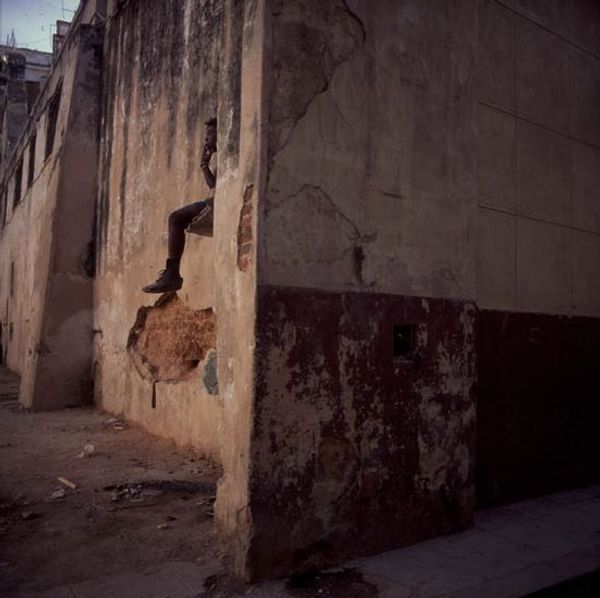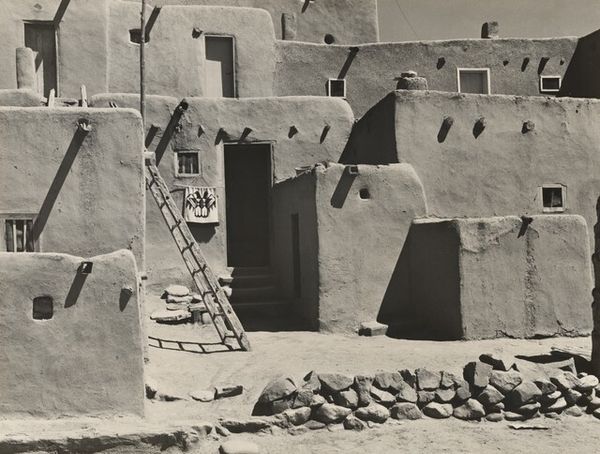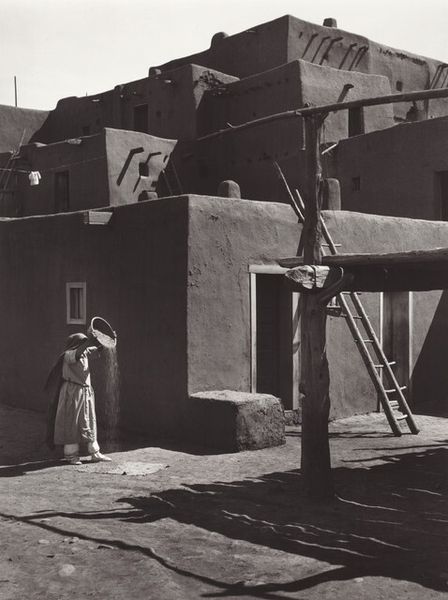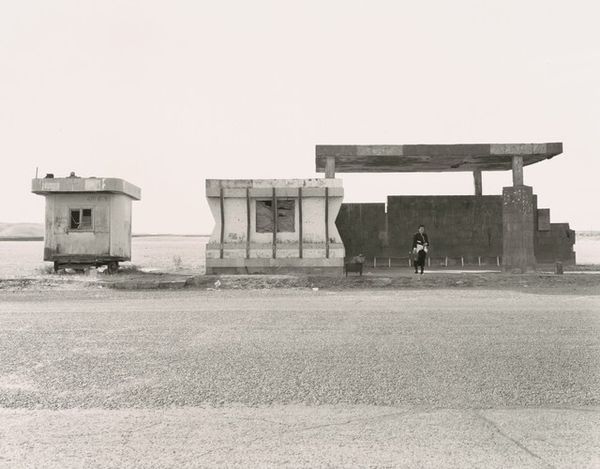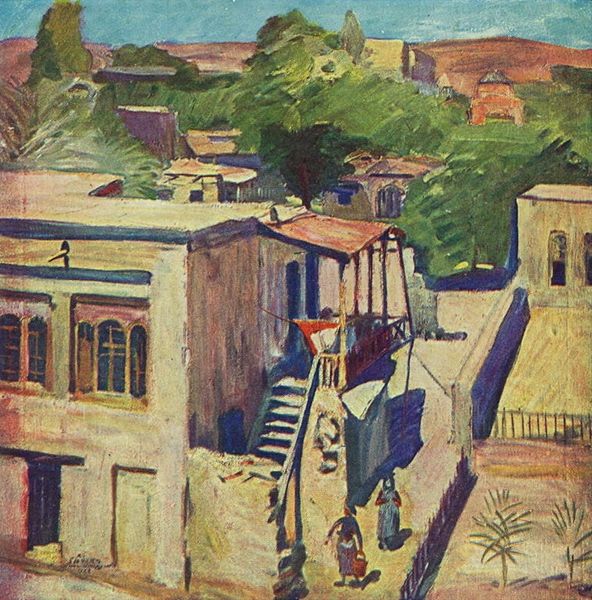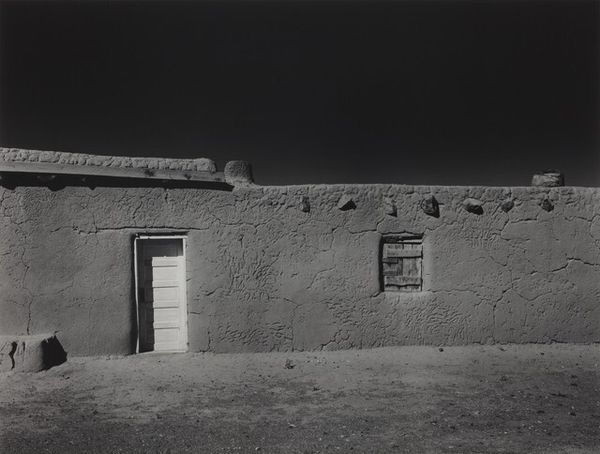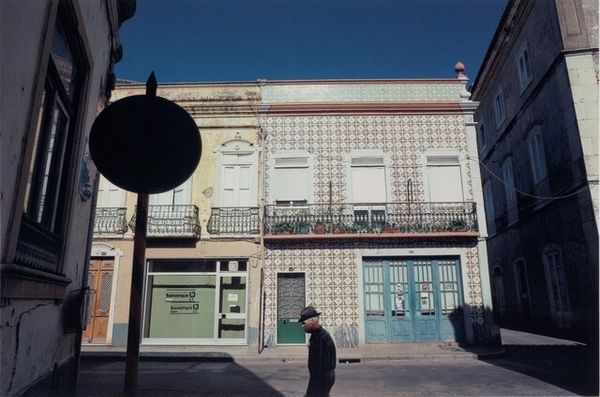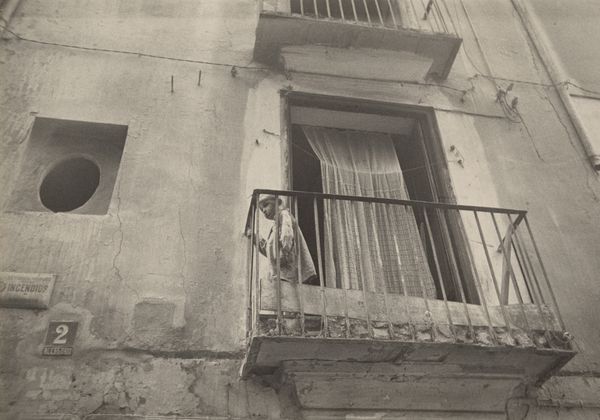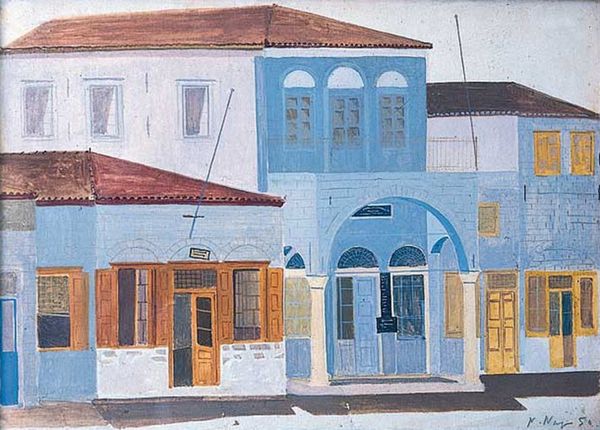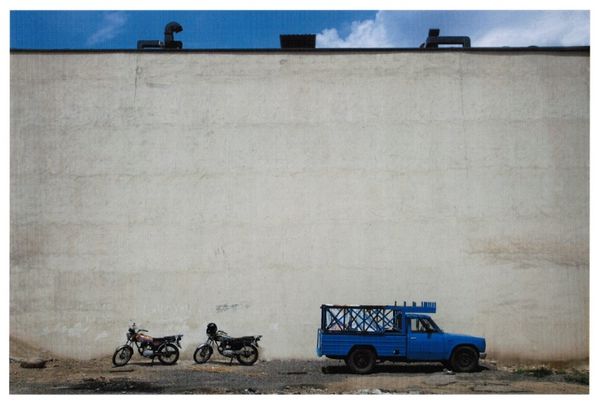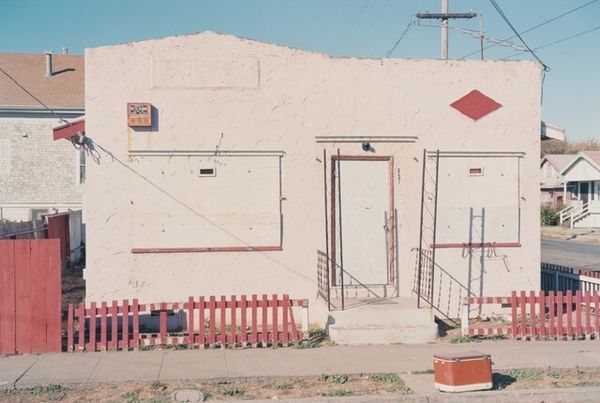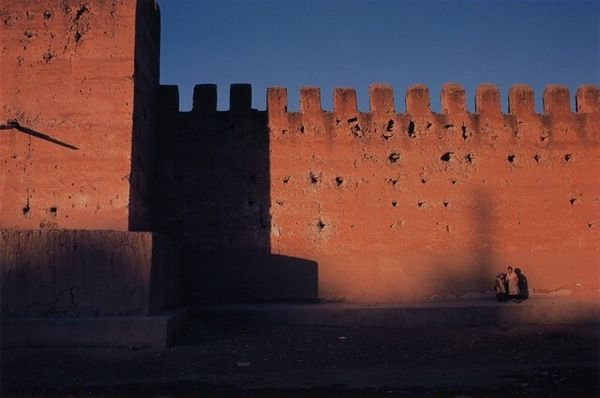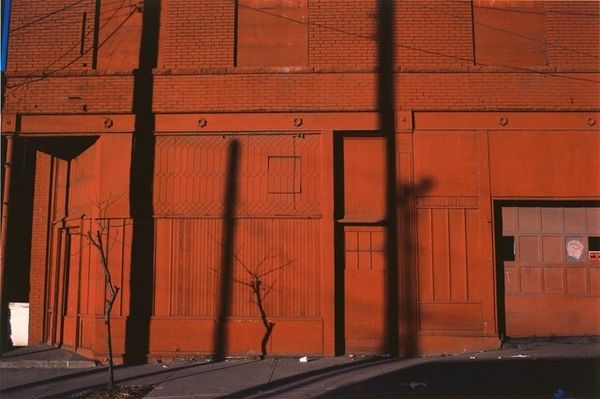
photography
#
portrait
#
landscape
#
street-photography
#
photography
#
street photography
#
public art photography
#
realism
Dimensions: overall (image): 24.2 x 36.7 cm (9 1/2 x 14 7/16 in.) sheet: 35.56 x 45.09 cm (14 x 17 3/4 in.) mat: 40.64 x 50.8 cm (16 x 20 in.)
Copyright: National Gallery of Art: CC0 1.0
Curator: This is Harry Callahan's "Morocco," a photograph taken in 1981. It presents a compelling slice of urban life. Editor: My first impression is one of geometric serenity. The strong horizontal and vertical lines, the repeated shapes... it’s almost like a De Stijl painting, but softened by those faded colors. Curator: Callahan often used photography to document social landscapes, and this image is fascinating in that regard. Look at the interplay between the architecture and the individuals moving through the space. The stark, seemingly impersonal facade contrasts with the human element. Editor: Indeed. Callahan’s genius lies in extracting the formal qualities even from such a social setting. The textures—the rough stucco of the wall against the smooth finish of the blue doors—they create such a satisfying visual experience. And the shadows cast by the figures walking—they add depth and complexity. Curator: And consider the year it was taken: 1981. The Cold War looms, and there are specific economic challenges, rising structural inequality on a global scale. How do these concerns manifest, even subtly, in the photographer's framing of an ordinary street scene? Editor: Well, even without that explicit historical context, the composition draws the eye repeatedly along structured lines, and that reinforces the geometric impression that you pointed out. I also find myself appreciating Callahan’s precise calibration of tone and shade throughout the composition. It really harmonizes the overall picture plane. Curator: What do you make of Callahan’s choice to shoot in color here? Considering his many black-and-white works, it feels quite intentional, like a conscious decision to embrace color photography’s potential. Editor: I think the faded tones work in tandem to abstract the familiar forms that shape our perception, and these forms in turn invite multiple readings that transform this scene from everyday street photography into something more elusive, more like the street-photography works that verge toward the dream-like and surreal. Curator: Seeing it from your perspective makes me reconsider how I initially assessed the image and whether I was as sensitive to its intrinsic details as I should have been. Editor: And focusing on labor, material, and production processes really opens my eyes to what’s actually there and has deepened my insight and interpretation, I agree.
Comments
No comments
Be the first to comment and join the conversation on the ultimate creative platform.
